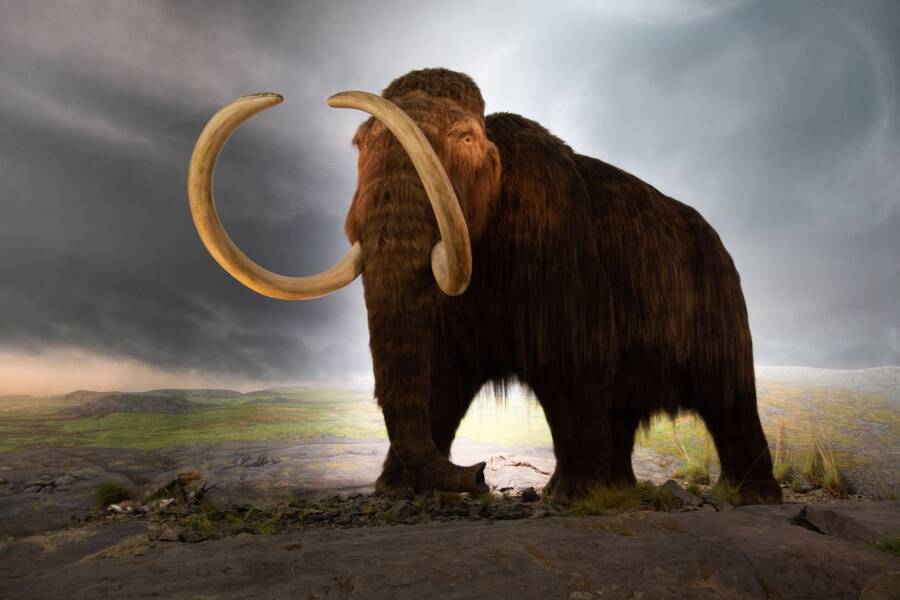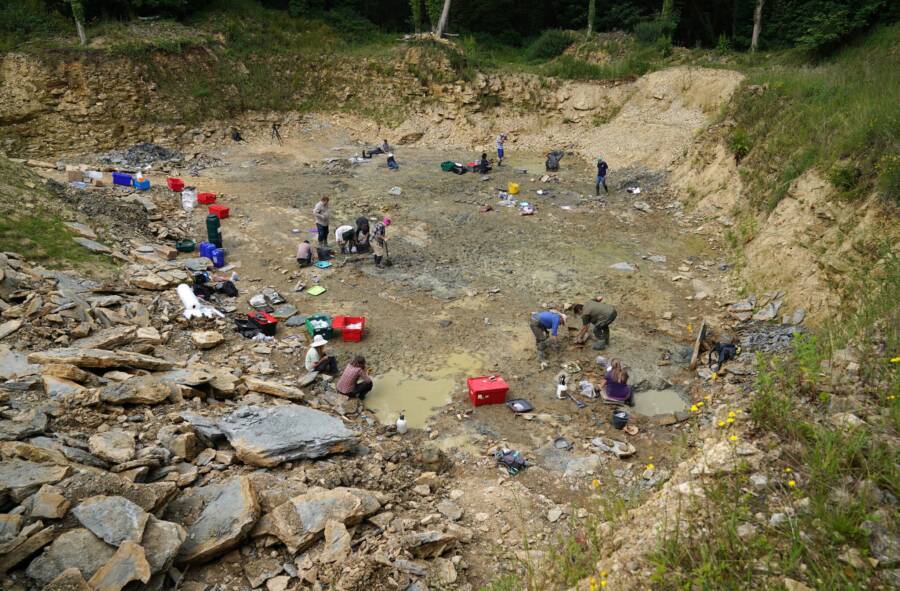Tasmanian Devils Reemerge In Australia After 3,000 Years

Aussie Ark/FacebookFor the first time in 3,000 years, Tasmanian devils were born and thrived on the Australian mainland.
Despite their cute appearance, Tasmanian devils are incredibly temperamental. They’re the world’s most sizable carnivorous marsupial and have one of the strongest bites in the mammalian kingdom. Vanishing from mainland Australia 3,000 years ago, conservationists just brought them back.
Established in 2011, the Aussie Ark project concluded in May 2021 with the birth of seven babies called “joeys” on the thousand-acre Barrington Wildlife Sanctuary in New South Wales. Their tangible return to Australia’s mainland followed a harrowing history spanning millennia of threats.
The species first vanished from the continent around 1000 B.C. when Asian migrants brought dingoes to the region. These dogs had no trouble eradicating their marsupial counterparts from the mainland, relegating them exclusively to the island of Tasmania.
There, the species suffered from a rare form of cancer that killed about 90 percent of the isolated population since 1996. With no more than 25,000 wild Tasmanian devils alive today, establishing a population removed from the diseased habitat of Tasmania was vital.
The Aussie Ark thus released 26 Tasmanian devils into the wilderness of the mainland in 2020 in hopes that they would thrive — only for seven healthy joeys to be born the following year. Remarkably, it was the first time in 3,000 years that they did.
Bioscience Company Raises $15 Million To ‘Revive’ Woolly Mammoths

Wikimedia CommonsWoolly mammoths have been extinct for 10,000 years — but might return.
Woolly mammoths have been extinct for about 10,000 years. Nonetheless, biologist George Church raised $15 million to bring them back. With technology to read and edit DNA that he himself developed, Church is determined to manipulate the genetic code of Asian elephants to do so.
While the project sounds like science-fiction, it certainly isn’t baseless. A Harvard Medical School graduate, Church believes that the Asian elephant would only require about “50 changes” to its genome to create the hybridized animal — as Asian elephants share a common ancestor with the woolly mammoth.
Most intriguing of all, however, is that Church intends on refining the species to bolster it against the increasing threats of climate change. While his final “product” would look like a woolly mammoth, it would be genetically conditioned to survive in the Arctic.
“Our goal is to make a cold-resistant elephant, but it is going to look and behave like a mammoth,” he said. “Not because we are trying to trick anybody, but because we want something that is functionally equivalent to the mammoth, that will enjoy its time at -40C, and do all the things that elephants and mammoths do.”
Church isn’t worried about the genetic editing, but about the unprecedented effort of harvesting an elephant embryo and creating an artificial womb large enough for the two-year gestation period. With skeptics on one shoulder and supporters on the other, his woolly mammoth de-extinction project is certainly intriguing.
Amateur Paleontologists Find 10,000 Jurassic Fossils Using Google Earth

Andrew Matthews/PA Images/Getty ImagesThe trove of Jurassic-era fossils was so colossal that officials kept the location a secret.
In July 2021, amateur paleontologists Neville and Sally Hollingworth put their professional counterparts to shame. Bored at home during another COVID-19 lockdown, the 60-year-old Brit and his wife used Google Earth to inspect promising archaeological sites — and made the find of a lifetime.
Neville Hollingworth had found his first fossil at age 12 and subsequently got his Ph.D. in geology. It was a casual online perusal of a limestone quarry in Cotswolds, England, however, that led him and his wife to unearth more than 1,000 fossils from the Jurassic Period.
Hollingworth had noted from satellite imagery alone that the Gloucestershire destination held promising remnants beneath the surface. Once England’s lockdown lifted, he was able to confirm as much — and found a 167-million-year-old trove of fossilized starfish, brittle stars, and feather stars.
It was the oldest discovery of Jurassic echinoderms ever found in the United Kingdom. The endeavor was so scientifically significant that officials kept the location of the excavation site utterly secret. It even yielded three new species of feather star, brittle star, and sea cucumber.
Remarkably, one couple’s cabin fever-induced Google Earth obsession has led to a discovery that experts believe will shed invaluable new light on the evolutionary history of marine life.





